Lens Look: Shooting with a Minolta Shift CA Rokkor-X 35mm f2.8 on a NEX7
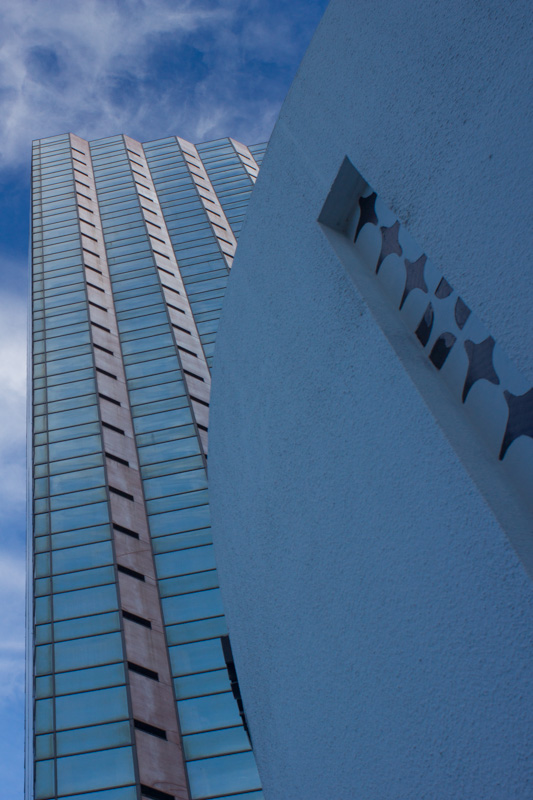
There is something wonderfully absurd about taking a nice little mirrorless camera, that marvel of modern technology, and sticking a huge fifty year old lens on it. So when a Minolta Shift CA Rokkor-X 35mm recently came my way, I couldn’t wait to test it out. This post collects my first thoughts on shooting a Shift CA on a NEX7 camera.
Lens
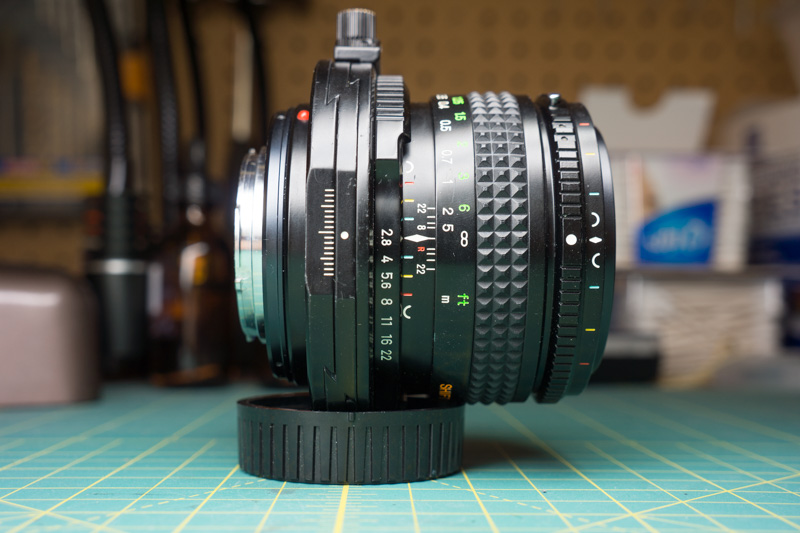
The 35mm Shift CA is the only shift lens that Minolta ever produced. There were four subtly different version of this lens: the Shift CA reviewed is the Rokkor-X edition, the earliest and IMO best looking, but there was an almost identical plain Rokkor version, and three slightly different MD versions (just Shift CA, no Rokkor or Rokkor-X). This is a specialty lens (i.e. expensive), not all that common, but not particularly rare either.
Design
The lens is quite bulky, a good deal larger than a normal 35mm Rokkor, which is to be expected given that it is basically a medium format lens. But it’s the distribution of this bulk that is unfortunate.
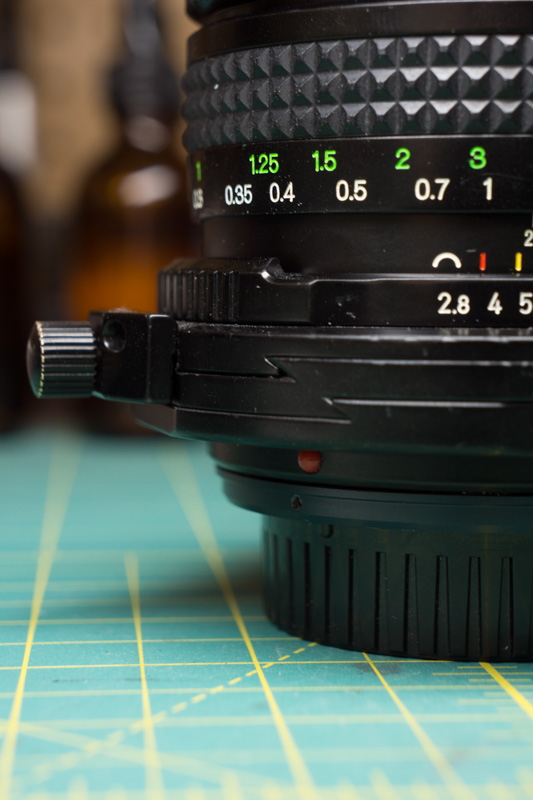
Pick up a Shift CA and the first thing you’ll notice is a large disk, just above the mounting plate, jutting out about one centimeter on the diameter. This disk houses the shift mechanism. The two shift control knobs jut out another centimeter from this disk. These protuberances make the lens feel unduly massive. And because one knob protrudes from the bottom of the lens when mounted, cameras do not sit flat rested on a surface, a major problem when trying to use a railing or other sturdy support as a makeshift tripod.
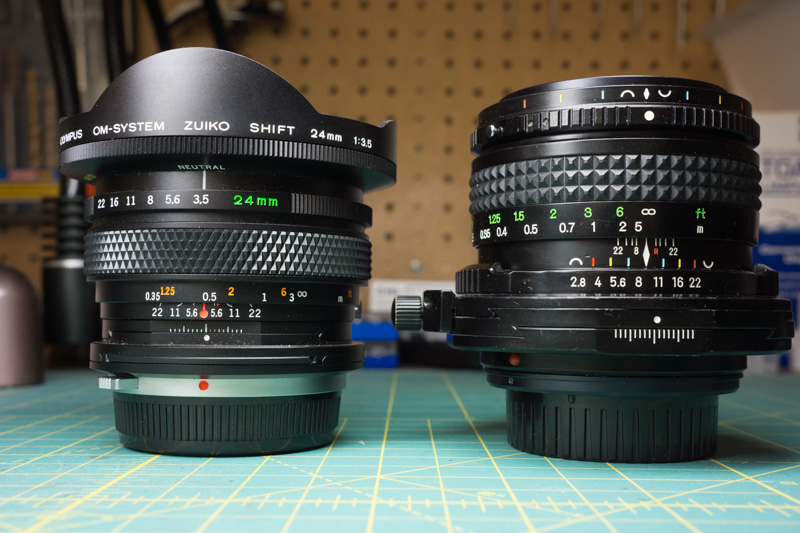
Contrast the Minolta Shift CA with Olympus’ superb Zuiko 24mm shift lens, pictured left. While the Zuiko is undoubtably heavier and physically larger, it tapers from the massive front optic to the mounting plate, and therefore feels much smaller in the hand or mounted acamera. And that’s compared to a 24mm shift lens. The comparable Olympus 35mm shift Zuiko is practically petite next to the Shift CA and far more enjoyable to shoot with (the 35mm Zuiko is superior in almost every way to the Minolta Shift CA and is cheaper too).
This is a lens made for the tripod; there are simply too many pieces to adjust for practical handheld shooting. When adapting the Shift CA to a modern mirrorless system, given its heft, I recommend against using your camera’s tripod mount. Instead find a tripod mount that sits on the lens adapter itself. I use a Novoflex MD to E-Mount adapter, plus the compatible tripod mount.
A quick digression on this particular setup though. The Novoflex adapter and tripod mount are way too expensive, but worth every penny. Build quality is super solid and the mount system lets you rotate the camera freely while it is mounted on the tripod. One common application is switching between landscape and portrait, or adjusting to a slightly off kilter tripod. But more so, the Novoflex mount has all but eliminated my need for a vibration prone tripod head.

But alas! here comes the Sir Mix-a-Lotesque Minolta Shift CA, with a back end so large that it runs into the Novoflex tripod mount. Baby got back indeed. My solution: attach the tripod mount backwards. But this blocks camera rotation; once you decide on shooting landscape or portrait, you’re stuck that way unless you unmount the lens. This problem may be specific to my setup, but it is certainly annoying. And this would not be a problem if the lens were designed better.
Operation
The Shift CA can shift 11mm vertically in either direction, and 8mm horizontally in either direction. The shifting is not fully independent, i.e. shifting vertically limits how far you can shift horizontally, but 7.5mm of diagonal shifting is still possible according to Minolta. The shift can be locked at any position along these extents and there are helpful millimeter scales along the sides of the lens for the vertical and horizontal shifts. While the exact shift distance may not be too interesting, these can help you shift evenly in both directions for panoramas.

The two shift control knobs lock down the current vertical or horizontal shift. Loosen the vertical knob and you can freely shift the lens along the vertical. But take care; there is little shifting resistance when loosened, so the lens will shift itself towards the ground unless supported. After forty years, my copy is a bit loose on the vertical shift too. Even really cranking down the vertical shift knob does not fully lock things in place and, while I haven’t yet had a problem with the lens shifting itself while mounted and fully tightened down, it is easy to forget to tighten things enough.
The aperture control ring sits atop the shift control disk. This placement makes the aperture control ring slightly awkward to access and difficult to view unless you lean over the camera.
Other
Perhaps the most interesting feature of this lens is its variable-field control (VFC), a feature found on just this lens and the rare VFC 24mm Rokkor. VFC gives the photographer control over the shape of the (normally flat) focus field. It is controlled by the topmost ring visible on the lens, the one immediately below the filter ring.
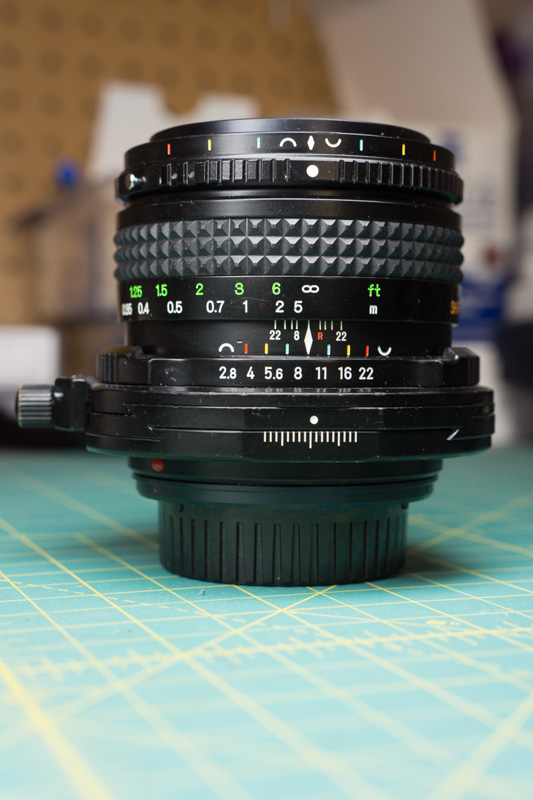
The VFC ring locks in the flat focus field position, rotate right for an increasingly convex focus field, or left for an increasingly concave focus field. Match the various color markers on the VFC ring with those on the focusing ring to tell where different parts of the frame are focused. The original Minolta guide provides a much more in-depth explanation of VFC. I must admit that I didn’t really have time to play with VFC to any extent, which adds yet another item to manage while shooting.
Finally, the Shift CA accepts normal 55mm filters.
Shooting
Given my complaints about the bulk and handling of the Shift CA, you might assume that I hated shooting with it. But that was not the case. The lens is a pain in the ass to operate, and best suited to certain types of photography, but it performs well and I found some interesting applications beyond classic architectural photography.
All images in this post come from a Sunday evening shooting downtown Seattle. You can find the complete gallery and full resolution images here.
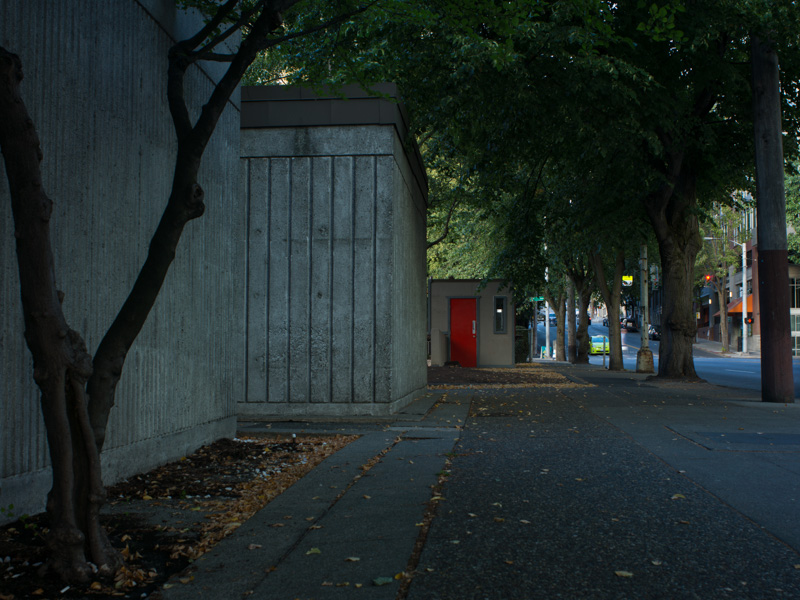
Experience
Shift lenses give the photographer control of perspective. But more control also means more complexity, and the fully manual Shift CA already demands a lot of attention. Now, on top of gear setup, framing, aperture selection, focusing, and camera settings, you have to worry about perspective control and possibly VFC too? It is overwhelming at first. Setting up to photograph even a simple scene takes thought and time, a few minutes at least. This is certainly not a good lens for capturing action shots or fleeting street scenes.

But such deliberate shooting is also a refreshing change of pace in a world where anyone can instantly snap a high quality photo with their phone. Shooting with the Shift CA made me select and compose shots more carefully. The lens also changed how I saw the city and changed my relationship to it. No more blending into the background, darting between shots. With the Shift CA, I become part of the scene. While shooting, I discussed the Minolta SRT 101 with a homeless man outside of a brutalist church, was nearly stampeded by a horde of french tourists, received unsolicited photography advice from a woman who looked exactly like Dusty Gozongas, got the old stink eye from some police officers, and was yelled at twice for tripod trespass (all the more impressive considering that I was on a public sidewalk both times.)
Shifting and Panoramas
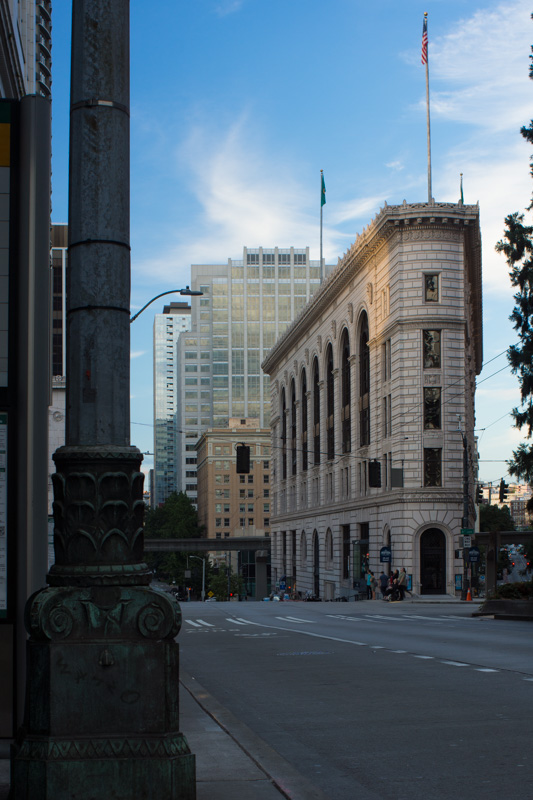
The most obvious application of this lens is architectural photography. On an APS-C camera like the NEX7, the 35mm Shift CA has an effective focal length of around 50mm, too narrow to capture the entirety of many buildings in a single shot, especially on cramped city streets. For this reason, I found myself taking abstract architectural detail shots rather than trying to capture entire scenes.
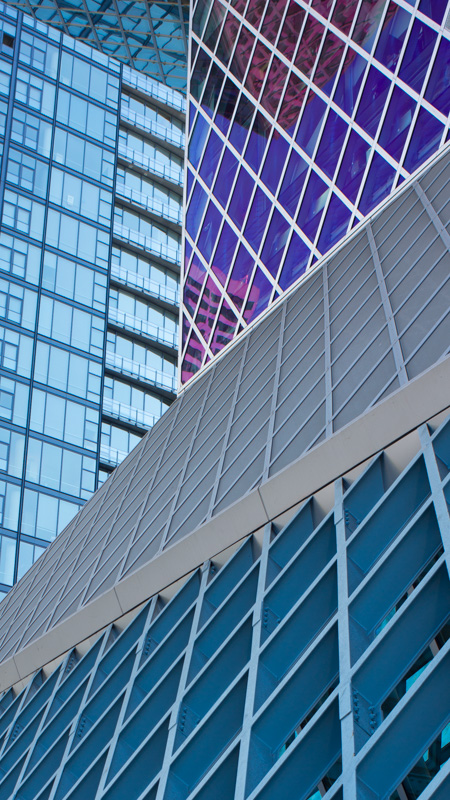
But by far my favorite application of this lens is taking panoramas. Multiple shifted images can be combined to create normal aspect ratio photographs (such as 3x2 or 4x3) with a higher resolution that would otherwise be possible in a single shot. This is accomplished by shifting in the opposite direction of the camera’s orientation. I shot Seattle entirely with the camera in portrait orientation, and so produced this type of high resolution photo by shifting the lens vertically (the horizontal shift from the photographer’s point of view).
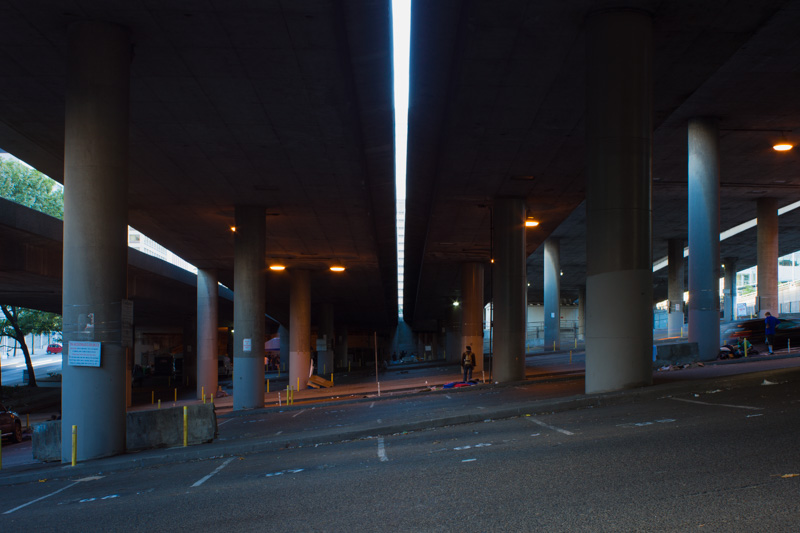
Start at the center of the scene, take one photo with the lens unshifted, and then two photos with the lens shifted horizontally to either extreme (taking another two midway on each side is usually a good idea as well). The combined image has an aspect ratio of around 3x2 and a resolution approaching 9000 x 6000px on my 24MP NEX7. You can limit the extent of the shifts to create images with different aspect ratios, such as 7x5 or 1x1, but I usually take the full 3x2 image and crop later.
The three images are easy to merge with a program like photoshop and the combined photo has almost no optical or color distortion (circular polarizers in particular usually mess up normal panoramas, but are not a problem in my experience shooting panoramas on a shift lens). The results appear to have been taken with wider angle lenses on a higher resolution camera.
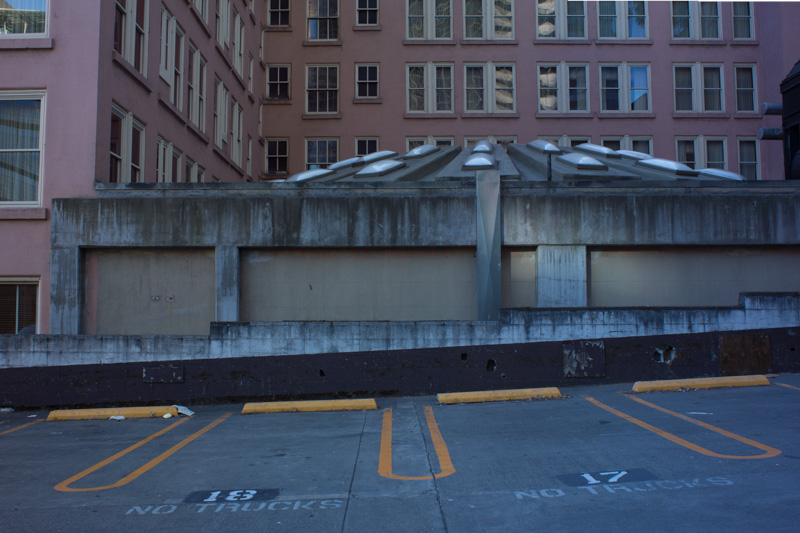
But a more interesting application is the creation of true panoramas, including vertical panoramas with interesting, and sadly underused, aspect ratios. This is accomplished by shifting in the same direction as the camera’s orientation, so horizontally (the vertical shift from the photographer’s point of view) in my case for a camera mounted in portrait orientation.
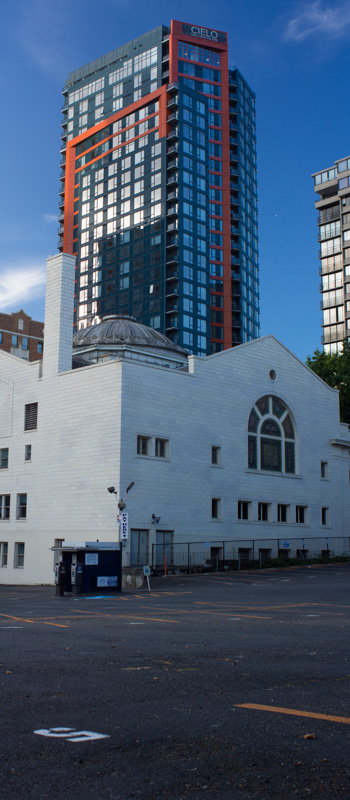
Fully shifted, this technique produces images around 8800 x 3800px on my NEX7. A full shift in portrait mode has an aspect ratio of 7x16, although again you can limit the extent of the shift for more conservative aspect ratios such as 1x2 or 9x16. Shooting in portrait, I find the vertical panoramas this method produces to be particularly interesting, a nice change of pace.

Image Quality
The Shift CA performs great even on modern hardware. It is sharp, especially unshifted, and even the far edges of fully shifted photographs are reasonably sharp. But focusing is unforgiving. I shot mostly at f11 on a tripod, and found this lens to be very sensitive to minute adjustments, even at this focal length. For infinity focusing, just the slightest turn is the difference between a perfectly sharp picture and a noticeably blurry one.
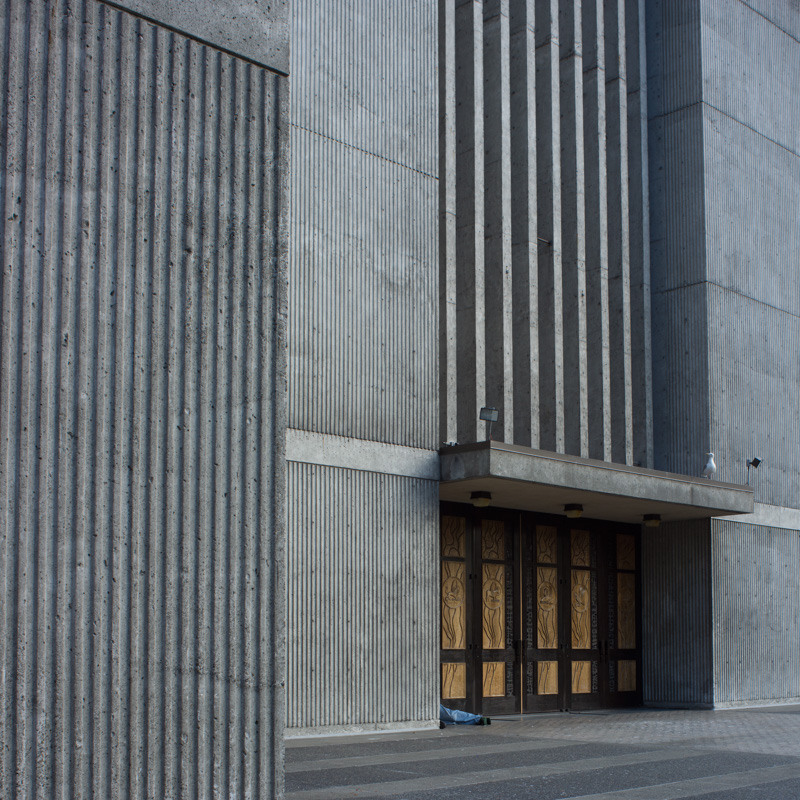
Most lenses are much more forgiving. It greatly helps to use a magnified image preview while focusing, but focusing handheld or on a moving object is difficult.
The optical coating seems pretty solid, even shooting into light and for fairly contrasty scenes. Being able to mount filters is a big plus in my book as well. And, while the name Shift CA may suggest otherwise, images had little chromatic abrasion.
Conclusion
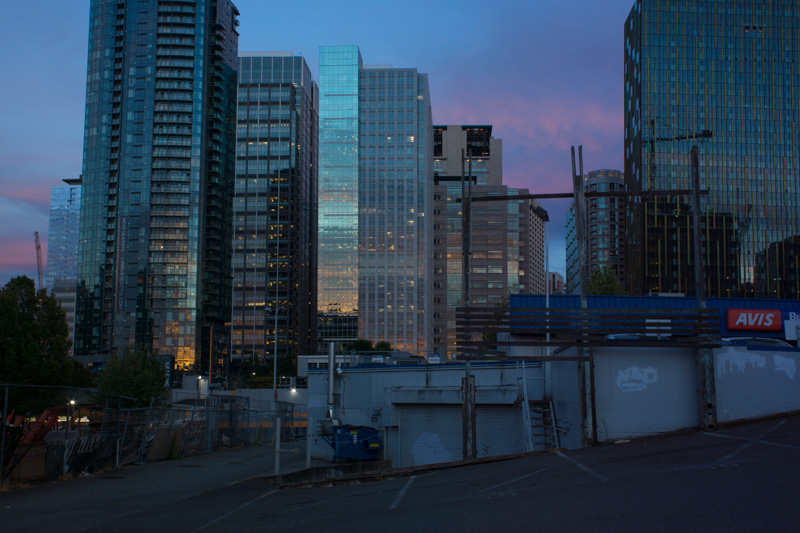
I have mixed feelings about the Minolta 35mm Shift CA. It is a bit of a nightmare in design and handling. The shift mechanism is bulky, heavy, and far more annoying to operate the Olympus’ friction based shift lenses. Long term, I’m also concerned about its durability with extensive use. And even the basic operations, like reading the current aperture or focusing to infinity, are more annoying than they should be.
But I still really enjoyed shooting with the lens and quite like some of the pictures it produced. Besides perspective control, the lens is great for shooting high resolution stitched images and distortion free panorama with interesting aspect ratios (7x16 photos can be pretty damn cool). The complexity and time required to shoot with a manual shift lens will turn off some photographers, but the benefit of all this complexity is control. Sometimes it’s fun to really just get in the zone and spend a lot of time working with your camera to produce that perfect shot.
Still, there is no getting around the fact that the Minolta Shift CA is not the best, old, 35mm shift lens you can get for the money, unless of course you are shooting with an old Minolta camera. Especially for mirrorless, there are better 35mm shift lenses out there. I’m most experienced with the Olympus 35mm shift Zuiko. At less than half the price, it offers superior handling and performs better in my limited testing, the only really loss being the VFC. The Shift CA is certainly a good overall lens as well, but perhaps a better collectors item.

